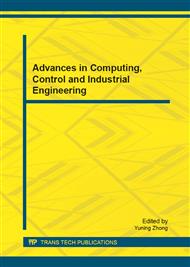p.124
p.129
p.135
p.141
p.147
p.152
p.158
p.164
p.170
Directional Pattern versus Omnidirectional Pattern of Switched Beamform Antennas for Asymptotic Connectivity
Abstract:
The connectivity of wireless networks is important for data transmission. Gupta and Kumar have already proved that if n nodes with omnidirectional antennas are located randomly, uniformly in a disk of unit area, the critical transmission range to achieve asymptotic connectivity is O( )[1]. In this work, we studied the network connectivity where nodes equipped with switched beamform antennas are randomly and uniformly distributed in a disc of unit area in R2, the antenna can be modeled in omnidirectional and directional patterns. We first assume that nodes in the network cooperate in routing each others’ packets without considering the scheduling, there exists critical transmission range to achieve asymptotic connectivity of the overall network, which responding to critical transmission power. Directional antennas are considered to be a viable solution for improving the network’s connectivity, However, we find that, without considering schedule, the smallest critical transmission range was obtained when omnidirectional antenna patterns were used in both the transmitter and receiver instead of directional antenna patterns in our model.
Info:
Periodical:
Pages:
147-151
Citation:
Online since:
November 2012
Authors:
Price:
Сopyright:
© 2012 Trans Tech Publications Ltd. All Rights Reserved
Share:
Citation:


